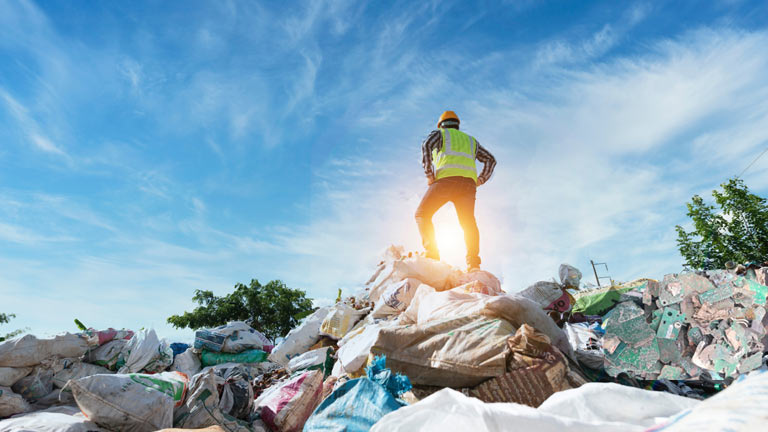In the pursuit of progress and industrialization, humanity has inadvertently left behind a toxic legacy in the form of polychlorinated biphenyls (PCBs). These persistent organic pollutants, once ubiquitous in industrial processes, continue to haunt our environment, posing threats to ecosystems and human health.
As we grapple with the consequences of past negligence, it becomes imperative to proactively address PCB contamination for a safer and healthier living environment.
In this article, we will explore the enduring threat of PCB contamination, from its origins and health risks to legal actions and proactive solutions.
Understanding the PCB Menace
Polychlorinated biphenyls (PCBs) stand as a persistent environmental challenge with roots deeply embedded in industrial practices of the past century. Developed for their remarkable stability and resistance to heat, these synthetic compounds found their way into numerous applications, ranging from electrical equipment to paints.
Despite their manufacturing ban in 1979 due to associated health risks, PCBs remain a potent threat. Understanding the PCB menace requires delving into their origins, chemical properties, and the lasting impact on ecosystems and human health.
PCBs in the Modern Landscape
The legacy of PCBs endures, with these insidious chemicals weaving their way into the modern landscape. NIH notes that products manufactured before the ban, such as old electrical equipment, continue to leach PCBs into the environment.
Deliberate actions, like the historical practice of using oil-containing PCBs to suppress dust on dirt roads, have left a lasting imprint.
Illicit dumping and poorly maintained hazardous waste sites further contribute to the persistent presence of PCBs in air, water, and soil. This creates an environmental challenge that demands proactive intervention.
Health Risks and Environmental Implications
PCBs pose significant risks to both the environment and human health. According to the Washington State Department of Ecology, these substances are recognized for their bioaccumulative nature. They progress through the food chain, concentrating on organisms, and ultimately impact those at the top, including humans.
Health risks associated with PCB exposure include birth defects, developmental delays, liver damage, and disruption of hormonal systems. The implications for ecosystems are profound, as evidenced by the decline in wildlife populations and the contamination of vital water bodies.
Recognizing the severity of these risks is crucial for implementing effective remediation strategies and safeguarding public health.
The Monsanto Settlement and Missed Opportunities
New Hampshire Bulletin reports that, in a landmark legal move, the state secured a $25 million settlement from Monsanto, a major PCB manufacturer. However, the allocation of these funds to the state’s General Fund rather than targeted PCB remediation efforts underscores missed opportunities.
The settlement aimed to address the harm caused by PCBs, holding Monsanto accountable for their role in environmental contamination.
To proactively tackle PCBs, it is imperative to direct settlement funds toward remediation projects. This will help ensure that the financial burden is shouldered by those responsible for the contamination.
Challenges in Funding and Resource Allocation
Effective remediation of PCB contamination faces hurdles in securing adequate funding and resource allocation. Federal resources primarily earmark funds for Superfund sites with established cleanup plans, leaving areas affected by PCB contamination in a funding limbo.
Competing environmental priorities further exacerbate the challenge, diverting attention and resources away from addressing the root causes of PCB pollution. Bridging this gap in funding and prioritizing remediation efforts is essential for mitigating the far-reaching consequences of PCB contamination.
Legal Pathways to Remediation
According to TorHoerman Law, lawsuits play a pivotal role in holding PCB manufacturers accountable for the environmental and public health consequences of their products. The Monsanto settlement serves as an important precedent, emphasizing the need for legislation that directs settlement funds explicitly toward PCB remediation.
Establishing laws that dictate the allocation of funds ensures that financial resources are channeled into projects that directly address the threat of PCB contamination. Through strategic legal pathways, communities can compel responsible parties to actively participate in mitigating the environmental impact of PCBs.
Beyond financial accountability, legal pathways also play a crucial role in addressing PCB exposure symptoms. Individuals affected by PCBs may experience various health issues, including skin conditions, and adverse effects on the immune, reproductive, neurological, and endocrine systems.
By pursuing legal remedies, affected individuals can seek compensation for medical expenses and hold manufacturers responsible for the health effects linked to PCB exposure.
Vigilant Monitoring and Public Education Initiatives
Addressing the PCB menace requires a proactive and united front. Comprehensive monitoring systems must be established to track PCB levels in air, water, soil, and organisms, providing essential data for targeted remediation efforts.
Simultaneously, public awareness campaigns are crucial in conveying the long-term risks associated with PCB exposure. Educating communities about the consequences of PCB contamination fosters a collective sense of responsibility and empowers individuals to advocate for environmental protection.
This call to action seeks to mobilize efforts toward creating a safer and healthier living environment, free from the persistent threat of PCB contamination.
In summary, addressing PCB contamination necessitates a collective commitment to proactive measures, combining legal actions, strategic fund allocation, and public awareness. The Monsanto settlement serves as a crucial precedent, emphasizing the need for targeted remediation efforts.
Overcoming funding challenges and legal hurdles is imperative to safeguard public health and ecosystems. The call to action involves vigilant monitoring, comprehensive education, and uniting communities in the pursuit of a PCB-free environment.
By drawing on the lessons of the past and implementing effective remediation strategies, a path toward a safer, healthier living environment emerges. The significance of fostering a shared responsibility becomes evident, offering resilience against the persistent threat of PCB contamination.

